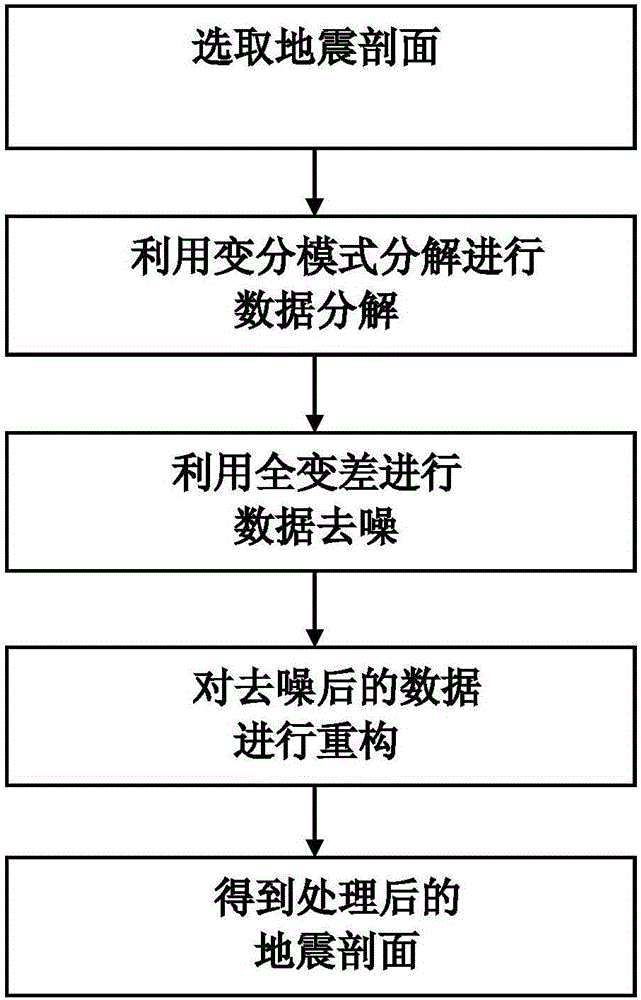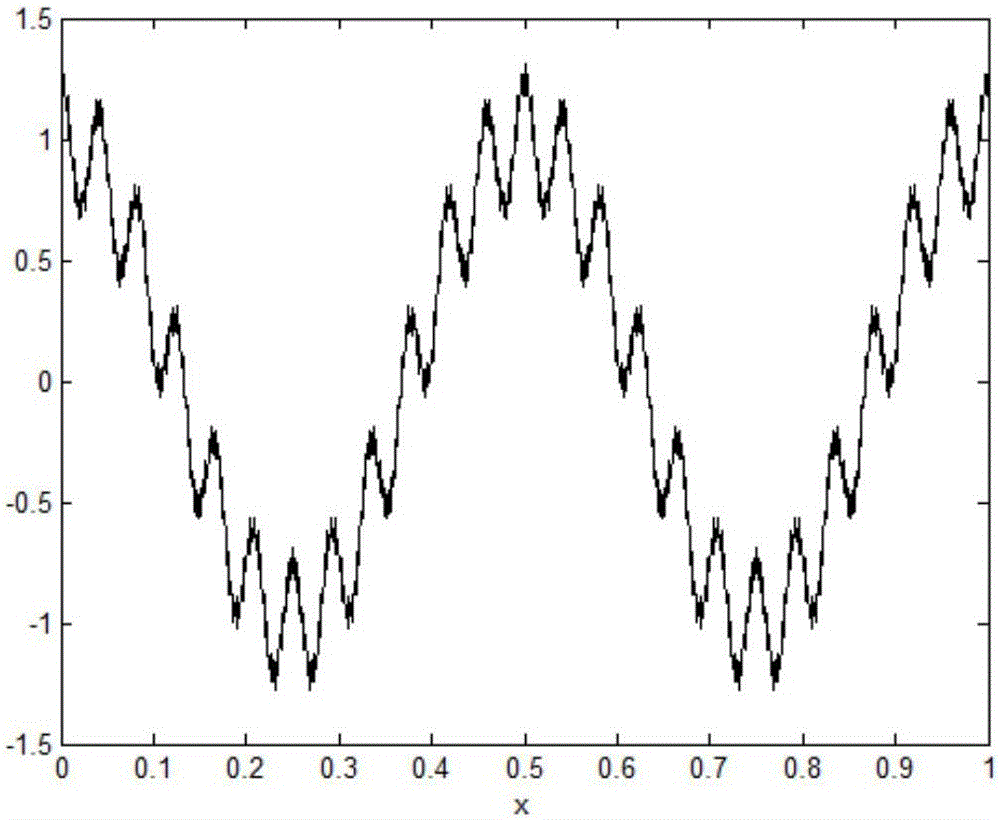Joint denoising method for seismic data
A technology that combines denoising and seismic data, applied in seismology, seismic signal processing, geophysical measurement and other directions, can solve the problems of destroying effective information, difficult to take into account high signal-to-noise ratio and high fidelity, etc. Signal-to-noise ratio, reliable results
- Summary
- Abstract
- Description
- Claims
- Application Information
AI Technical Summary
Problems solved by technology
Method used
Image
Examples
Embodiment Construction
[0027] Embodiment of the present invention: a joint denoising method for seismic data, such as figure 1 shown, including the following steps:
[0028] S1, using variational mode decomposition to decompose and process seismic section data to obtain new data, specifically:
[0029] S11, regard the signal as the initial data of the seismic section, use a cubic spline to respectively fit the local minimum and local maximum of the initial data, and obtain the corresponding upper envelope and lower envelope;
[0030] S12, subtracting the upper envelope and the lower envelope from the initial data to obtain new data;
[0031] S13, judging the standard deviation between the new data and the initial data, if the standard deviation is less than the predetermined value, the screening is terminated, and the predetermined threshold can be obtained through multiple test analysis, otherwise, the new data is regarded as the initial data and go to step S11. The new data can then be viewed as...
PUM
 Login to View More
Login to View More Abstract
Description
Claims
Application Information
 Login to View More
Login to View More - R&D
- Intellectual Property
- Life Sciences
- Materials
- Tech Scout
- Unparalleled Data Quality
- Higher Quality Content
- 60% Fewer Hallucinations
Browse by: Latest US Patents, China's latest patents, Technical Efficacy Thesaurus, Application Domain, Technology Topic, Popular Technical Reports.
© 2025 PatSnap. All rights reserved.Legal|Privacy policy|Modern Slavery Act Transparency Statement|Sitemap|About US| Contact US: help@patsnap.com



